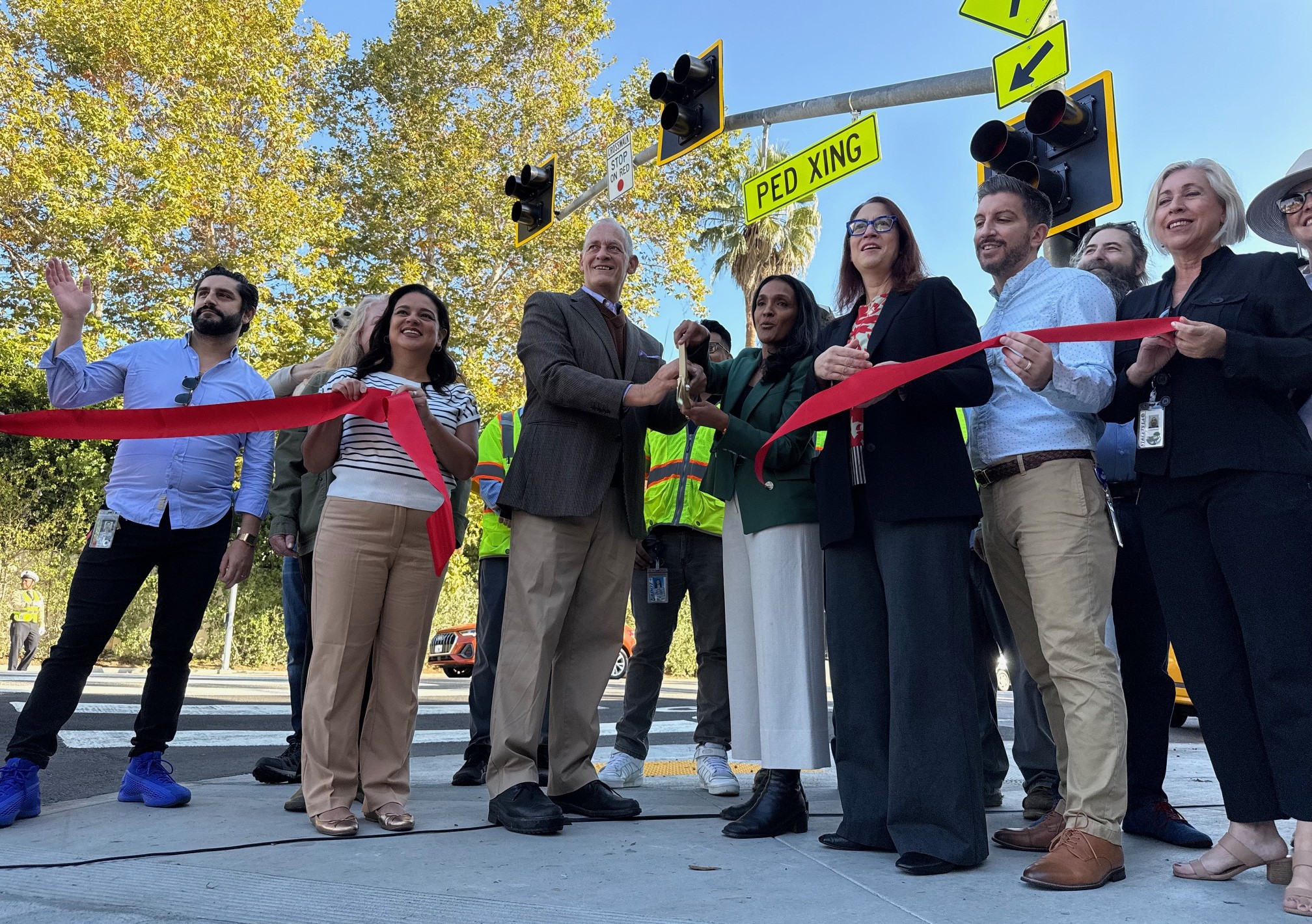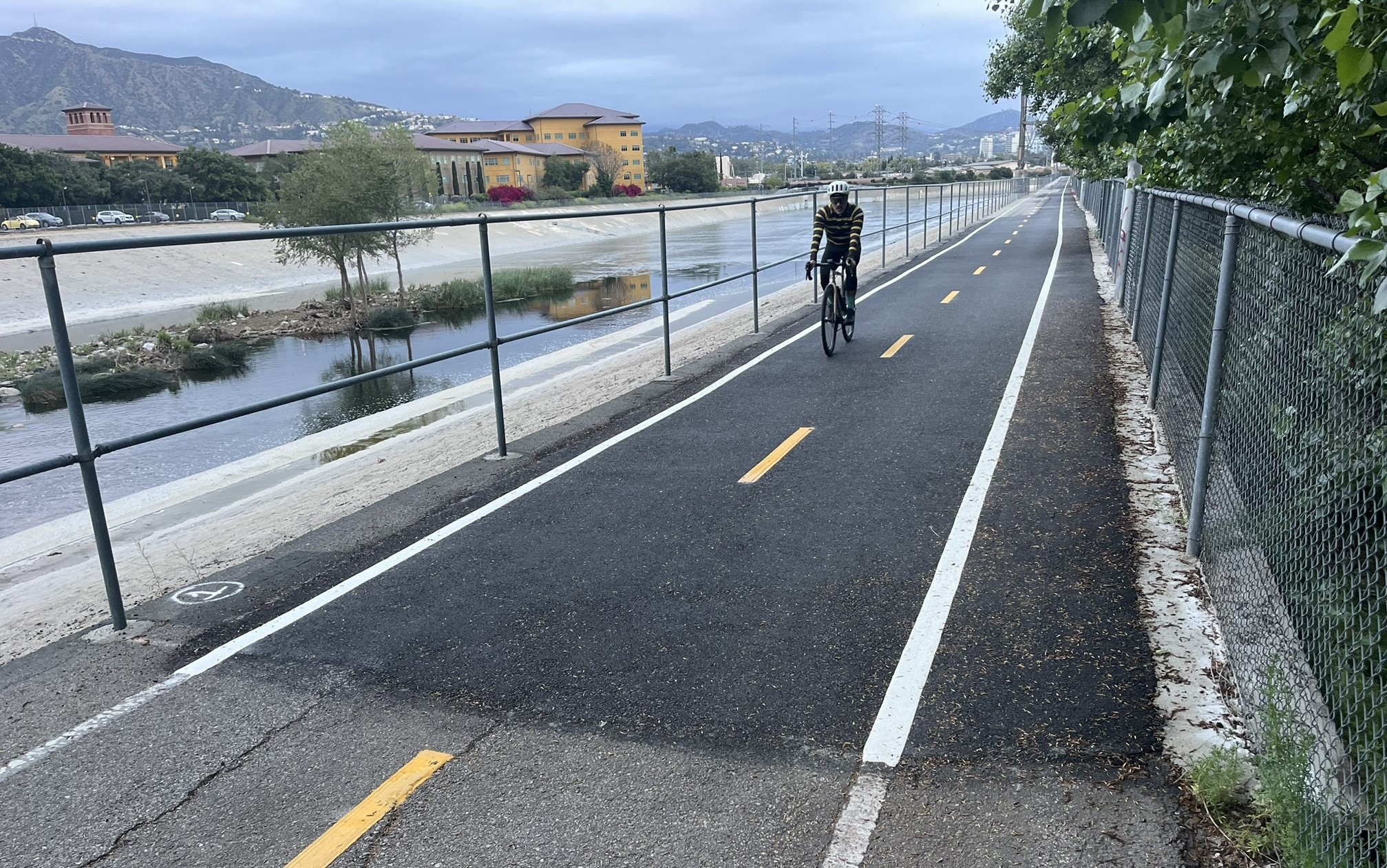Darrell Clarke from Friend's for Expo wrote with a few corrections to the story on Wednesday's meeting. Since the errors were more of me being a newbie and things being different out here than anything else, I decided to re-print his comments with an occasional explanation from me.
Stuff from the original post in black, Darrell's comments in green, my comments in red.
------------------------
Final decisions for where to place grade crossings are usually part of the Environmental Impact Statement, but the presentation given on the alternatives hints that a light rail line running parallel to the street is the most likely design for the route.
Not sure what you mean by "running parallel to the street". Proposed grade separations based on the MTA's Grade Crossing Policy will be announced soon.
I meant that it seemed to me that it was most likely that the tracks were going to run at grade with the street. Bad word choice on my part. I felt that way because of some of the comments in the official presentation about the cost of the project
--------------------
He pointed out that bother nationally (Chicago, D.C., New York) and Internationally (London, Paris, etc....) that world class, urban transit systems are either above ground or below ground to separate them from auto gridlock.
Light Rail is mostly at-grade in many other U.S. cities (see http://friends4expo.org/ltrail.htm for Western examples), as are trams in most European cities. As I said in the meeting, the city of Santa Monica is seeking a street-level approach into downtown as more pedestrian-oriented than an aerial structure.
I should have mentioned the difference between light and heavy rail to put the comments in perspective. However, I believe the commenter was trying to make a case that heavy rail was a better option.
--------------------------
Assuming the board approves of the alternatives, they will all undergo a complete study in an Environmental Impact Statement to determine the preferred route.
It's the Expo Construction Authority, not the MTA, which will make the decision on Nov. 1 of what alternatives will be studied in the Draft EIS/EIR (combined federal Environmental Impact Statement and California Environmental Impact Report). Following release of the Draft EIS/EIR and public comment, the Construction Authority will decide next summer what options will be chosen for the Locally Preferred Alternative (LPA) that will actually be built. The project will then go into its Final EIS/EIR and Preliminary Engineering stage.
On the major new rail projects I worked on back east, we didn't have Construction Authority's that were separate from NJ Transit. Thats where my confusion came from.
-------------------------------
This option is projected to attract the most riders (41,000) has the highest rating by the FTA, had the second lowest cost per mile of the three transit construction options (being beaten by the Bus Rapid Transit alignment) and had a low impact on the natural environment.
A technicality, but I presume the FTA hasn't rated it yet, rather the consultants have calculated how it would score on the FTA's criteria. These are also preliminary ratings, to be refined in the Draft EIS/EIR.
Point taken.






